After a short break, I'm ready to continue with writing about all the fun I have in the lab while doing my research! :)
Now that we have established our own model system (transgenic cell line) which stably expresses our gene of interest, we can continue with downstream experiments which will (hopefully) help us determine the effect of our overexpressed gene in our model system, and potential implications of that overexpression in Multiple Myeloma.
Small Molecule Screening
Once you have your model system, one of the first things you want to check is sensitivity of cells overexpressing gene of interest to different drugs, both to those already in use and to new ones.
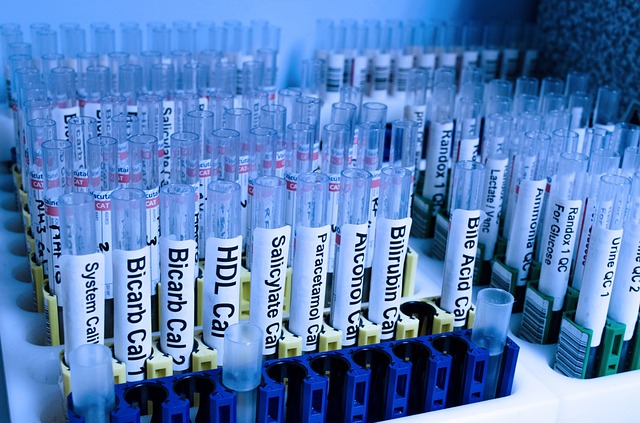
Image credit: Pixabay.com
One of the best ways to do that is to perform a high-throughput drug screen, meaning that you have to test a large number of different compounds to potentially find several drugs that will specifically target cells with high expression of your gene of interest.
But, what is exactly that large number of drugs you may ask?
Well, couple of thousands, or to be precise - 1902 different compounds in our case!
Wait, that's impossible, a human cannot test all those drugs by hand! Maybe a robot can?
Exactly! But where do we find one?
Screening facilities
Luckily, there are special places called screening facilities, where you can find professional and awesome team of people ready to help us investigators with our experiments. They are offering their services of high-throughput screens that can meet a large variety of needs.
One of such facilities is ICCB-Longwood Screening Facility at Harvard Medical School of Boston, and we had a privilege of using their services for our drug screen.
How does all this work?
First, you appoint for a meeting with stuff of screening facility where you describe your experiment in detail. Then you select which compounds you'd like to test in your experiment from their compound libraries. After establishing all important points and performing a test experiment to set up the instruments for your particular experiment/cell line, you're ready to start!
Screening procedure
To be able to perform a high-throughput drug screen, first you need to grow your cells in special plates containing large number of wells. For that purpose, 384-well plates are most often used.
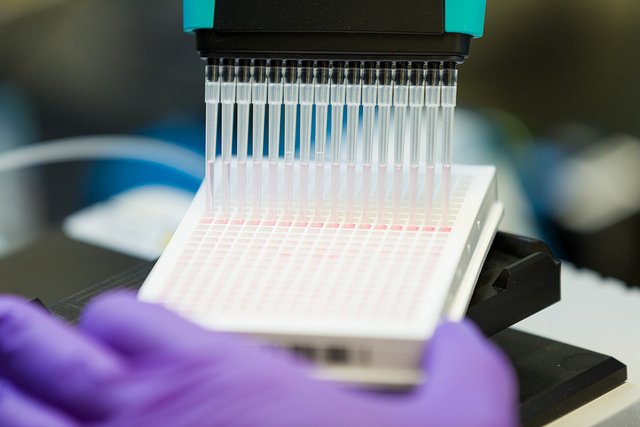
Image credit: NIH-NCATS by Daniel Soñé Photography, LLC, CC BY 2.0
Just so you get insight into the size of these very, very small wells - each of 384 wells has maximum volume of 120 microliters (µl), that is - 0.12 milliliter (ml)!
In our experiment, we seeded 30 µl of our cells in each well, for which we used the instrument called Multidrop™ Combi Reagent Dispenser.
Then different compounds were added in each well, 1902 compounds precisely, and the volume of each compound was 33 nanoliters (nl), or 0.000033 ml! Do you have any idea how small that volume is? So small that it's not visible with naked eye!
Of course that a human cannot pipette volumes that small, and that's why there are special robots who perform so called "pin transfer" of compounds. They are transferring nanoliter volumes of your desired compounds from storage wells into your 384-well plates using stainless steel pin arrays. Cool, isn't it? :)
To get a better picture of what I'm talking about, check out this super cool video of pin transfer process I personally made while performing drug screen at ICCB-Longwood Screening Facility - make sure to pay attention to the giant robotic hand grabbing plates and transferring them from the rack to the pin transfer spot!
▶️ DTube
▶️ IPFS
Luminescence assay
After the incubation time has passed (24, 48 or 72 hours), you need to perform cell viability assay to determine survival rates of your cells for each compound.
For that, we used luminescence-based assay, during which we quantify the ATP content in cells, meaning that there are metabolically active cells present. During the luciferase assay, in the presence of ATP, mono-oxygenation of luciferin is catalysed by firefly luciferase, and luminescence signal is emitted.
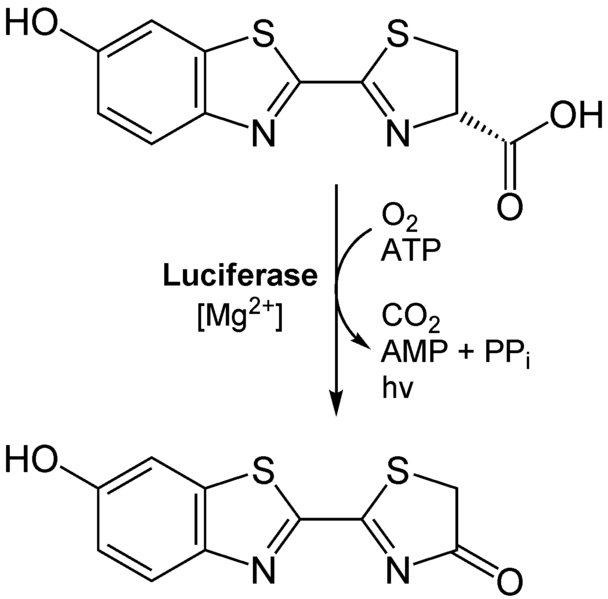
Image credit: Wikimedia Commons, public domain
In the end, obtained luminescence signal is detected by plate readers, the raw data is analyzed and survival rates are calculated.
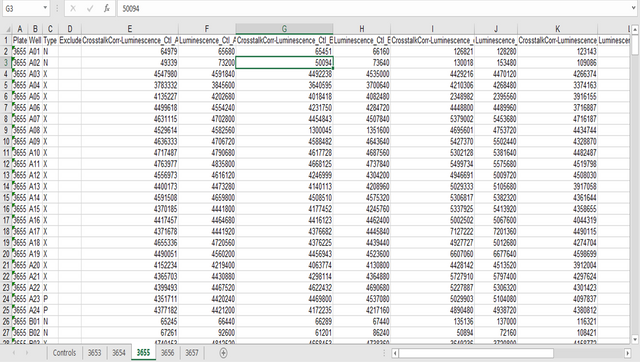
Raw luminescence data - this is what you get as an output from a plate reader
After you had a tremendous amount of fun with your raw data, and finished analyzing the effect of 1902 compounds on your cells, next what you should do is select candidates for cherry pick screen.
This basically means that you have to select the most active compounds, the ones that showed differential effect on survival of your cells - for example, the ones that preferentially killed cells expressing your gene of interest.
We selected 47 active compounds, and proceeded to cherry pick screen, which I had to perform myself (no robots this time!). We switched to 96-well plate format, because now we have less compounds to test and also because they are possible to pipette by hand.
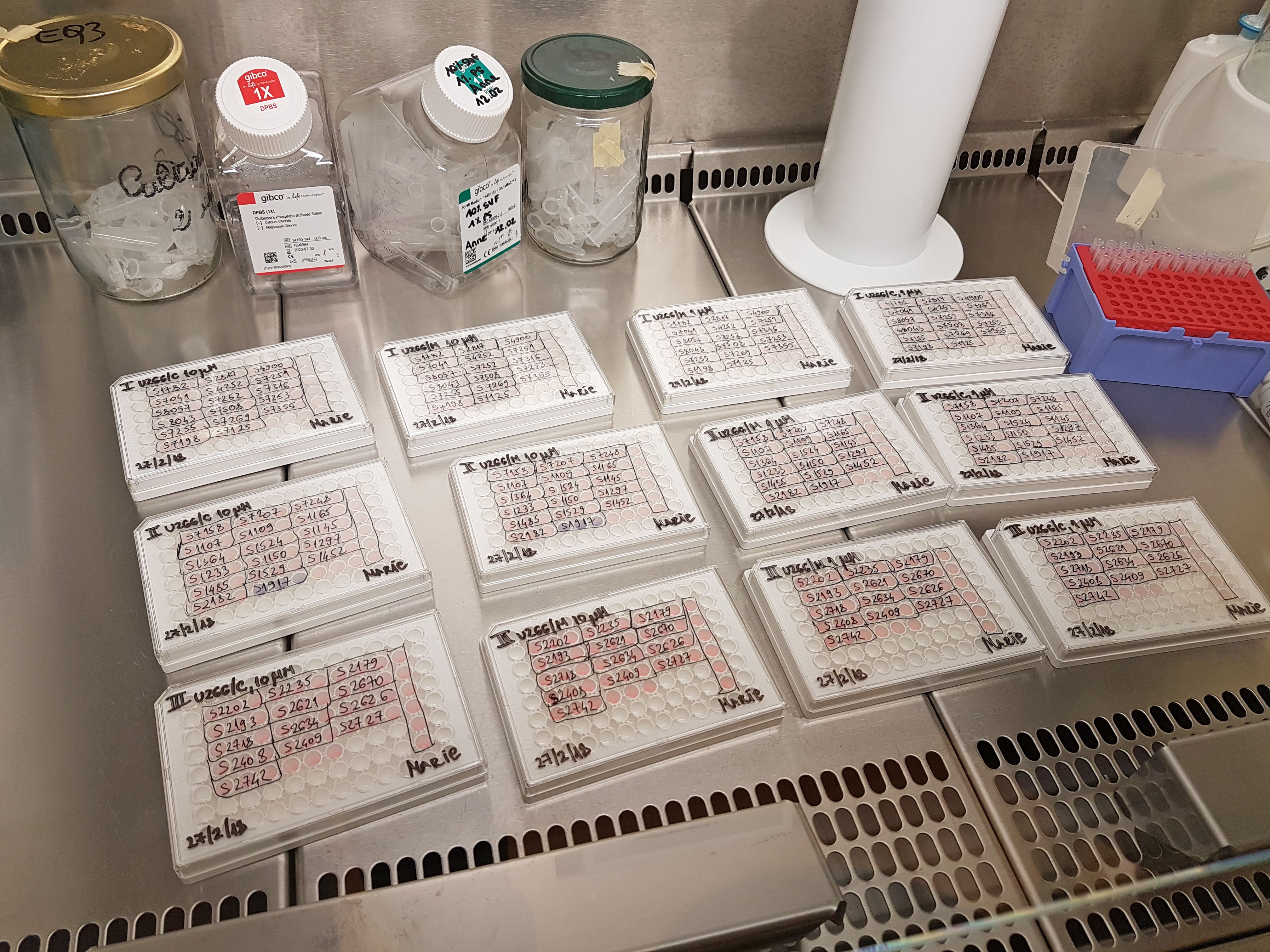
Look at all this plate art made by me - decreases your chances of making an error significantly!
The analysis of our cherry pick screen data is still in progress, but basically, we need to select a few compounds for further testing (other cell lines, animals, etc.) I will let you know how that party went! :)
Until then, relax and keep steemSTEM! ;)
Literature
A luciferase based viability assay for ATP detection in 384-well format
For more scientific-related content check steemSTEM. Follow me if you like my posts and want to read some more ;) If you have any thoughts/suggestions fell free to leave a comment!

I want a robot like that too. Thinking about the countless number of 96-well plates I've processed manually makes my hand twitch.
Nice piece of work (the post), and nice collaborations you have overseas!
Downvoting a post can decrease pending rewards and make it less visible. Common reasons:
Submit
<3 Autosamplers, the very best (*non-human) friends in every lab <3
Downvoting a post can decrease pending rewards and make it less visible. Common reasons:
Submit
well, i have an autosampler for my hplc, at least. during my master thesis I had to inject manually. but pipetting cell culture plates really is a pain in the ass.
Now that I think of it, I should get myself another master slav... student, I meant student.
Downvoting a post can decrease pending rewards and make it less visible. Common reasons:
Submit
Hahahaha :D
Downvoting a post can decrease pending rewards and make it less visible. Common reasons:
Submit
WARNING - The message you received from @abbyrich is a CONFIRMED SCAM!
DO NOT FOLLOW any instruction and DO NOT CLICK on any link in the comment!
For more information, read this post: https://steemit.com/steemit/@arcange/phishing-site-reported-autosteem-dot-info
Please consider to upvote this warning if you find my work to protect you and the platform valuable. Your support is welcome!
Downvoting a post can decrease pending rewards and make it less visible. Common reasons:
Submit
I'm sorry. I'm not a SCAM. I'm a victims of Scam
Downvoting a post can decrease pending rewards and make it less visible. Common reasons:
Submit
Cool, what did we do before these robots!?
Downvoting a post can decrease pending rewards and make it less visible. Common reasons:
Submit
I guess the high-throughput screening technology followed the development of robotics, it's just not possible doing these screens without them.
Downvoting a post can decrease pending rewards and make it less visible. Common reasons:
Submit
This would be quite a breakthrough in technology then!
Downvoting a post can decrease pending rewards and make it less visible. Common reasons:
Submit
When there's one piece of lab equipment I love, it's pipette robots. Only encountered one in the structural biology lab so far but damn, that thing is efficient.
And nanoliters? People are already dumbfounded when I tell them about microliters... Biology is fun :D
Downvoting a post can decrease pending rewards and make it less visible. Common reasons:
Submit
Brilliant piece @scienceangel. Plus the video was cool too. I like the very sharp and precise automation of the robots and their movements. No lagging in the transfer of pin plates too. I bet they cost a huge fortune, and to keep them very active and functional won't be cheap either. I hope they don't take over your job soon, if you keep being the "Video Director" of their actions @scienceangel
Downvoting a post can decrease pending rewards and make it less visible. Common reasons:
Submit
For dull job as pipetting - I hope they take over asap! :) For thinking part - I'm afraid we will need a human brain to do that, no robot can plan the experiments and analyze data on its own! :)
Downvoting a post can decrease pending rewards and make it less visible. Common reasons:
Submit
Lolz....Very true. The human intuition, analysis, and diagnosis can never be replaced. Although, Artificial Intelligence might be a threat to all that in the future, if A.I gets to marry Robots.
Downvoting a post can decrease pending rewards and make it less visible. Common reasons:
Submit
Can prevent myself from thinking. Approaching the compounds... approaching... and breaking the full thing... Aaaahh damned theorists :)
Downvoting a post can decrease pending rewards and make it less visible. Common reasons:
Submit
The cost of the experiment would certainly make you think twice ;)
Downvoting a post can decrease pending rewards and make it less visible. Common reasons:
Submit
Yeah they will think twice before hiring me :D
Downvoting a post can decrease pending rewards and make it less visible. Common reasons:
Submit
Those robots are supercool. Wish I saw it in person. Hopefully one day 😋 Thanks for exposing us to this
Downvoting a post can decrease pending rewards and make it less visible. Common reasons:
Submit
Interesting post. I guess you have a lot of fun when working . It is awesome that thing you do .
Downvoting a post can decrease pending rewards and make it less visible. Common reasons:
Submit
I'm sorry. I'm not a SCAM. I'm a victims of Scam
Downvoting a post can decrease pending rewards and make it less visible. Common reasons:
Submit
This good..
Downvoting a post can decrease pending rewards and make it less visible. Common reasons:
Submit